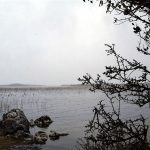Rivers trusts are charities, established by local people to look…
Using Reverse Auctions to support delivery of catchment off-sets in Wessex, UK
Since June 2016, Wessex Water have been working with EnTrade, trialling a reverse auction platform to help deliver nitrogen offsets through catchment management. James Peacock outlines how this approach invites farmers and others to bid for funding for environmental improvements, to offset capital works that Wessex Water would otherwise have to build.
Poole Harbour is a high-profile site on the south coast of England, and has some of the highest levels of biodiversity in UK. It is an important bird habitat, protected as a RAMSAR wetlands site, a Site of Special Scientific Interest (SSSI), and as a Special Area of Conservation/Special Protection Area (SAC/SPA).
The last forty years have seen a marked increase in levels of nitrate flowing from the catchment in to the Harbour. The catchment is currently at risk from eutrophication from nitrate pollution.
Despite significant investment to reduce nutrient inputs from sewage treatment works in the catchment, further reductions are required to meet Water Framework Directive standards. In 2014, the UK regulators asked us to build a nitrate treatment works at our Dorchester sewage treatment works, to reduce our nitrate discharge by 40 tonnes. However, this work would cost around £6 million to install and £400,000 annually to operate. It would remove less than 2% of the total annual load to Poole Harbour from all sources.
The majority of nitrate losses in the catchment come from agriculture, and therefore this is where the best opportunities for nitrogen reduction are. There are various ways to achieve nitrogen reduction in agriculture, including cover crops, arable reversion, buffer strips and spreader calibration.
In the Poole Harbour catchment, we estimated that we could achieve a nitrate saving through a catchment management approach for 40% of the total cost of an asset-based approach, on a whole life cost basis. We decided to use a reverse auction as a way to set the price for measures to deliver this 40 tonne of nitrogen saving.
Reverse auctions are not new. They work best for simple commodities, and have been popular in procurement for 30 years. They help to find the market price for a commodity, in our case ecosystem services. This means the price paid for services should be fair to buyers and sellers, and based on supply and demand in the market.
One way to deliver nitrogen savings is to grow cover crops over the winter period. Cover crops are sown in the autumn after a commercial crop, where the farmer would not grow his next commercial crop until the spring. The cover crops reduce leaching by taking up residual nitrogen held in the soil and by providing ground cover over the winter, when most leaching occurs.
nitrogen saved. We then contract with the most cost effective bids. We take the cost effectiveness from the cost entered by the farmer and the calculated effectiveness of his bid.
A number of factors affect how effective a cover crop is at reducing nitrogen leaching. Date of sowing and choice of cover crop are directly in the control of the grower, and therefore we use these factors to influence our estimate of effectiveness. The earlier a farmer sows a cover crop the greater the effectiveness, but the impact of sowing date will differ between crops.
During an auction, a farmer selects the type of cover crop they will grow and the date they expect to grow it. The system then takes this date and calculates effectiveness (in kgN/ha) using the effectiveness curve for the selected cover crop, shown above.
EnTrade have now run six auctions with Wessex Water, United Utilities and Natural England. These auctions have included arable reversion, cover crops and buffer strips. In total, we have received bids for 150 tonnes of nitrogen reduction measures through the platform, from nearly 50 farmers.
In Poole Harbour, the auction approach has resulted in an overall cost per kg of nitrogen saved of £1.40 per kg N (£76 per hectare) for cover crops. This is 20% less than the overall average of all bids of £1.68 (£97 per hectare), showing the value of the auction process. It has also helped improve the reach of catchment management in the area, improving engagement with more farmers.
We use farmer-submitted photos and satellite imagery to ensure that farmers have put in the measures. We make the agreed payment once we were satisfied with the evidence. The planting of cover crops by farmers has had an over 90% success rate, and our sampling results have shown that the measures have been successful in delivering the required savings, very close to the estimated savings in the platform. We then feed this data back in to the platform to improve the calculations, and therefore the accuracy of the estimates.
We found in our feedback surveys that 70% of farmers who use the system were positive about it for our first auction. This increased to 90% in the most recent auction. We are currently carrying out some work to find out about the eligible farmers who have not bid.
Having demonstrated that a reverse auction platform can work for nitrates, Entrade are now in the process of developing modules for other outcomes – this includes reducing phosphorus and pesticides in catchments and increasing uptake of biodiversity and natural flood management. Ultimately, we want to build a platform that can deliver and quantify multiple outcomes, to get the most out of spending in catchments. In future auctions, we will aim to quantify these additional natural capital benefits, which we can enhance by combining further funding from other sources – to achieve truly sustainable catchments.
James Peacock, Entrade Product Manager
Find out more:






